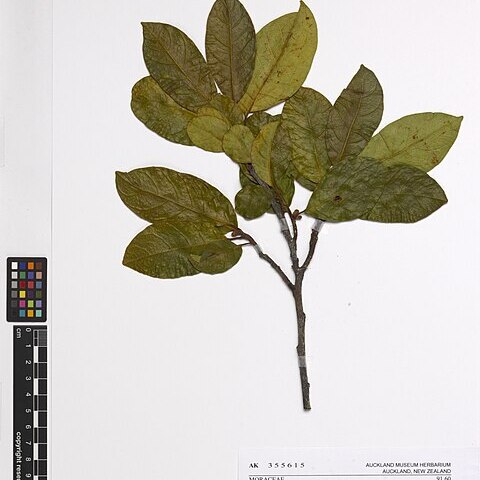Trees 10-25 m tall, d.b.h. 40 cm. Bark dark purple, exfoliating. Young branchlets 1.5-2 thick, grayish to whitish appressed puberulent. Stipules linear, caducous. Leaves distichous; petiole 1.5-2 cm, pubescent; leaf blade elliptic to obovate, 8-15 × 4-7 cm, pinnately lobed on young trees, leathery, abaxially green to whitish green and with farinaceous pubescence, adaxially dark green and puberulent on midvein when young, base cuneate, margin entire, apex acuminate to shortly acuminate; veins conspicuous and grayish white when dry, secondary veins 6-7 on each side of midvein, apically curved, abaxially prominent, and adaxially flat. Inflorescences axillary, solitary. Male inflorescences ellipsoid to obovoid, 1.5-2 × 1-1.5 cm; peduncle 2-4.5 cm, pubescent; bracts shield-shaped. Male flowers: calyx lobes 4, spatulate, densely pubescent, adnate to bracts; anther ellipsoid. Fruiting syncarp pale to golden yellow, ± globose, 3-4 cm in diam., brown pubescent, papillate; peduncle 3-5 cm, shortly pubescent. Fl. spring to summer.
More
A small evergreen tree. It grows 10-25 m high. The trunk is 40 cm through. The bark is dark purple and peels off. The young branches have white hairs. The leaves are alternate. The leaf stalk is 1.5-2 cm long. The leaf blade is oval and 8-15 cm long by 4-7 cm wide. The leaves are lobed on young plants. Leaves are dark green on top and whitish green underneath. There are 6-7 secondary veins on each side of the midrib. Flowers occur singly in the axils of leaves. Male flowers are 1.5-2 cm long by 1.1-5 cm wide. The fruit are small, round and yellow. It is 5-7 cm across. The fruit can be seeded or seedless. The seeds are edible.


